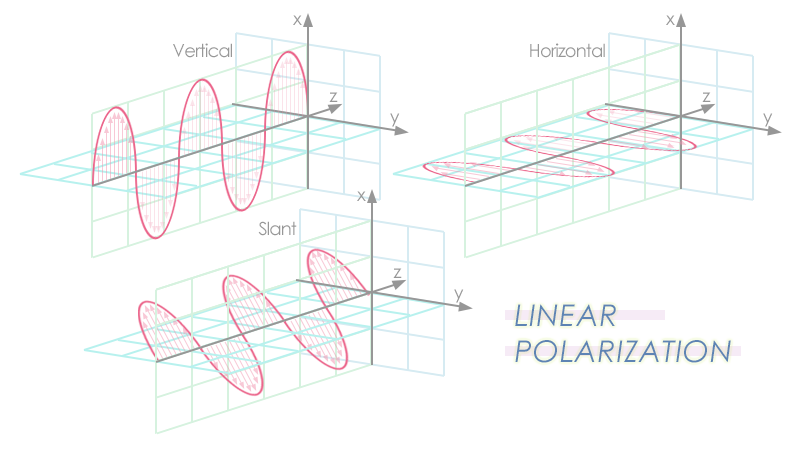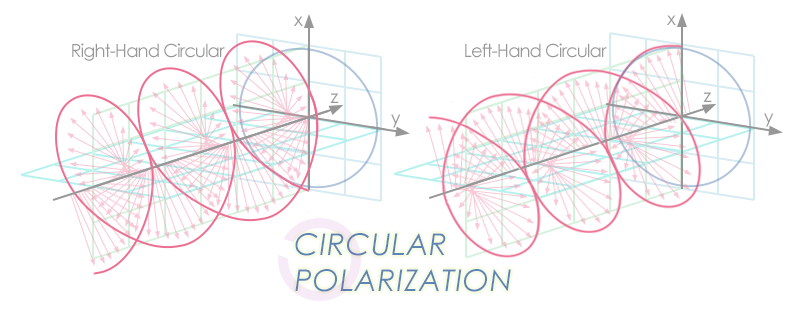Antenna Polarization
Polarization = direction of EM fields produced by the antennas
Polarization is defined as the special property of electromagnetic waves that provides a specific relation between the time-varying direction and magnitude of the vibrating electric field. More simply, it can be said that polarization represents how the electromagnetic waves are physically oriented in space.
Types of Polarization
Different antennas have different types of polarization.
- Linear (most common)
- Vertical Polarization (picks up and radiates vertically polarized signals)
- Very convenient for use with automobiles
- Horizontal Polarization
- Slant polarisation: A form of radio antenna polarisation that is at an angle to the horizontal or vertical planes. In this way both vertical and horizontally polarised antennas are able to receive the signal.
- Vertical Polarization (picks up and radiates vertically polarized signals)
- Circular
- Ellyptical



It is important to match the polarization of the RF antenna to that of the incoming signal. In this way the maximum signal is obtained. If the RF antenna polarization does not match that of the signal there is a corresponding decrease in the level of the signal. It is reduced by a factor of cosine of the angle between the polarisation of the RF antenna and the signal.
Cross Polarization
Cross Polarization is the polarization orthogonal to the desired polarization.
Ex:
- Cross Polarization of horizontal polarization is vertical polarization
- Cross Polarization of Right Hand Circularly Polarized (RHCP) is Left Hand Circularly Polarized (LHCP
In a purely polarized antenna, the value of cross-polarization should be zero. However, in the real world, there is no such thing as a purely polarized antenna.
Thus, we define cross polarization as the difference in decibels between the maximum radiation intensity of the required polarization.
if a vertically polarized antenna has a cross polarization of -30 dB, that means the value of the amplitude of the horizontally polarized signal that we will receive will be 30 dB lower than the desired/vertically polarized signal.
